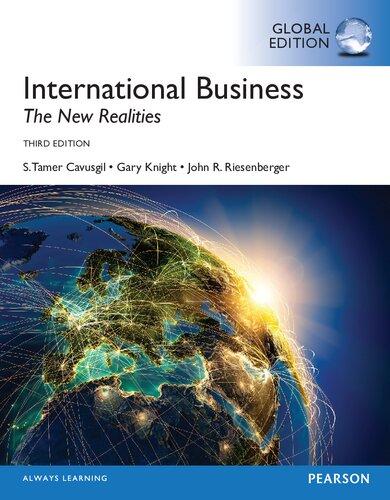The worlds top personal computer (PC) producers are HP, Lenovo, Dell, and Acer. In 2011, Lenovo became
Question:
The world’s top personal computer (PC) producers are HP, Lenovo, Dell, and Acer. In 2011, Lenovo became the world’s second-largest PC vendor, after HP. A Chinese firm, Lenovo generates more than $21 billion in total sales and holds about 33 percent of the PC market in China and 15 percent in other countries. In recent years, Lenovo has experienced rapid growth, even during periods of soft global demand.
When Lenovo was founded in modest circumstances in 1984, no one imagined it would evolve into a Fortune Global 500 company with a presence in 160 countries. Today, from regional headquarters in each of Beijing, China, and Raleigh, North Carolina, Lenovo offers desktops, laptops, tablets, workstations, servers, and mobile phones to customers across the globe.
Company Strategy The PC industry has reached maturity, especially in the advanced economies. Computers are commodities and profit margins are thin. The industry is global, which means firms compete with each other, and cater to customer needs, on a global scale. PC firms are under pressure to ensure company survival and success.
Key to Lenovo’s success is ensuring organizational learning to continuously optimize the firm’s value-chain activities. Lenovo uses mergers and acquisitions (M&As) to acquire needed knowledge and other assets from partner firms, and to expand into markets worldwide. In 2005, Lenovo acquired the PC business of IBM. The deal instantly established Lenovo as the number-three PC maker worldwide.
In 2011, Lenovo formed a merger with NEC, the largest PC vendor in Japan, to better access the huge Japanese PC market. The merger increased Lenovo’s scale economies in manufacturing and marketing. Most recently, Lenovo acquired a half interest in Medion AG, a German PC and consumer-electronics firm, with the goal of expanding marketing and distribution in Europe.
Since 2010, Lenovo has followed a “Protect & Attack” strategy. While protecting its core business, especially the Chinese market, Lenovo is aggressively growing its market share in emerging markets and advanced economies, as well as in new product categories such as tablets and smartphones. The push into emerging markets benefits from Lenovo’s deep knowledge of doing business in China. Lenovo now obtains about 20 percent of its revenues from emerging markets outside China.
Top management emphasizes global innovation, global products and branding, global human resources, and creating a corporate culture conducive to global success. Let’s examine these strategies in detail.
Case Questions
1. What is strategy? How does Lenovo use strategy to succeed in the global marketplace? What strategies does Lenovo employ to maximize company efficiency and flexibility? What does Lenovo management do to foster organizational learning?
2. Describe Lenovo’s organizational culture. What are the characteristics of Lenovo’s culture? How does the culture help Lenovo achieve its international goals?
3. What is the nature of Lenovo’s international strategy? Is the firm’s strategy primarily multidomestic or global? Justify your answer.
What advantages does Lenovo derive from the particular international strategy(s) that it pursues?
4. Examine Lenovo in terms of the integration-responsiveness framework. What are the pressures that Lenovo faces for local responsiveness? What are the pressures that Lenovo faces for global integration? What advantages do local responsiveness and global integration each bring to Lenovo?
Step by Step Answer:

International Business
ISBN: 99710
3rd Global Edition
Authors: S. Cavusgil, Gary Knight, John Riesenberger





